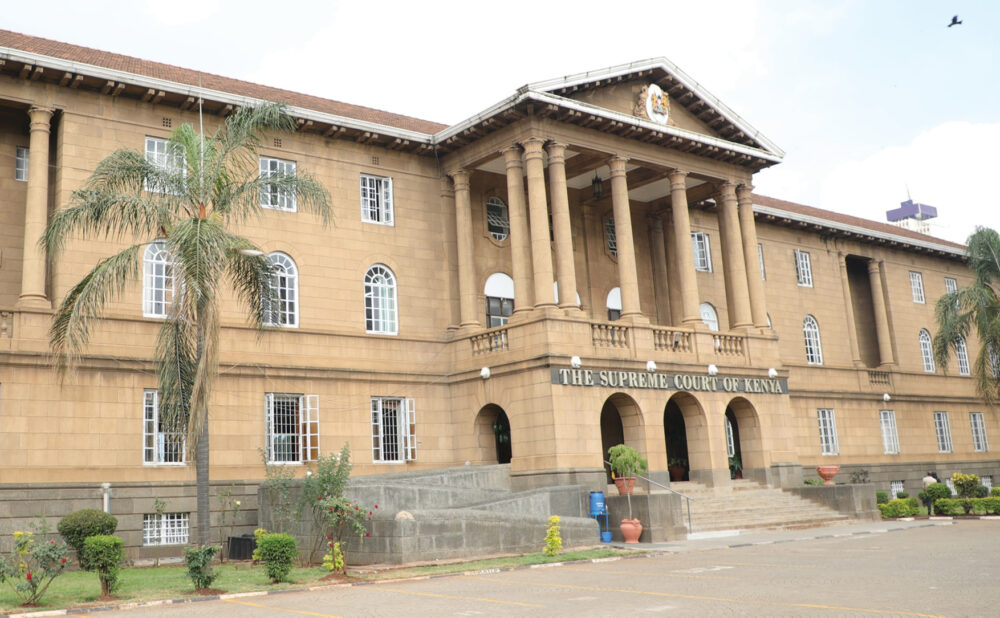Status of Court Annexed Mediation in Kenya
Introduction
Every citizen has a right to access to justice under Kenyan Law, and the Judiciary is the primary custodian of ensuring access to justice is guaranteed. The Judiciary Transformation Framework (JTF) was created to further this mandate with justice as its central pillar. To increase access to justice, the ADR mechanism was set up. The judiciary carried out a number of legislative re-organization and updates to set up a legal framework for Court Annexed Mediation. To allow the courts to refer disputes to mediation, the Civil Procedure Act, 2012 was amended. It allowed reference to mediation by the courts at the parties’ request or if courts found the case better suited for mediation. The amendment also led to establishing the Mediation Accreditation Committee (MAC) that was mandated to create training and code of conduct for professional mediators who would be central to CAM.
The Rules Committee, which spearheaded the drive behind the amendments, approached several stakeholders, which led to the adoption of CAM by the Family and Commercial Court. On April 4th 2016, the CAM project became operational, spearheaded by MAC, Alternative Dispute Resolution Operationalization Committee (AOC) and the Technical Working Group Secretariat (TWG).
CAM and the Constitution
Article 159, Constitution of Kenya, 2010, states that alternative forms of dispute resolution, including reconciliation, mediation, arbitration and traditional dispute resolution mechanisms, shall all be promoted as long as they do not contravene the Bill of Rights and are not repugnant to justice or inconsistent with the Constitution or any written law.2 Article 189 (4) States that National legislation shall provide procedures for settling intergovernmental disputes by alternative dispute resolution mechanisms, including negotiation, mediation and arbitration.3Which further widens the scope of application for ADR. These are the essential elements that create the constitutional basis for ADR in dispute settlement in Kenya. Their significance is that ADR can apply to any conflicts, thereby widening ADR applicability.4 It is also a clear demonstration of the adoption of alternative dispute resolution as a method of conflict resolution in all issues.
The Civil Procedure Act, Cap 21, Laws of Kenya, contains several provisions that govern ADR use in dispute resolution. A number of proposals to sections 1 and 81 were enacted by parliament in July 2009 to introduce ADR in the Civil Procedure Act amendment.5 Section 1A (1) of the Civil Procedure Act provides that the Act’s overarching goal is to assist the equitable, quick, proportional, and cheap resolution of civil disputes regulated by the Act. The judiciary is obligated to use its authorities and interpret the civil process to achieve the overarching goal.6 In practice, this means that the court, by its analysis of the law and issuing orders, will guarantee that the Act is not used to perpetuate injustice or extend proceedings, hence minimizing litigation expenses for the parties. The clause can also serve as a platform for the court to apply procedural rules that allow for the use of ADR processes to guarantee their achievement of the overarching goal.
CAM can arise in two ways, either under the application of the Arbitration Act (as amended in 2009) or under the Civil Procedure Act. Section 59 and Order 46 of the Civil Procedure Rules, 2010, provides courts involvement in the arbitral process, with Section 59 of the Act providing references of issues to arbitration. The fashion of the arbitrator’s appointment under Order 46 Rule 2 is to be in accordance with the parties’ agreement. However, failure to appoint an arbitrator or umpire, under Rule 4, Implies that the courts may appoint an arbitrator or make an order superseding the arbitration under Rule 5, after an application by the party who gave notice to the other, and after giving the other party the chance to be heard. An award is rendered pursuant to arbitration under the Rules. Rule 10 requires that the individuals who made it sign it, date it, and file it in court within 14 days, along with any depositions and documents taken and proved before them.7 A court has the authority to edit or amend an award under Rule 14 if it is defective or contains an evident error, if a portion of the award is based on an issue that was not referred to arbitration, or if it has a typographical mistake or error resulting from an unintentional slip or omission.8 Under Rule15, the court is authorized to remit an award for review by the arbitrator. Rule 18 states that the court shall, after giving adequate notice to the other parties, enter judgment in accordance with the award, and a decree shall issue as a result of that decision.9 There shall be no appeal from such decree unless the decree is in excess of, or not in compliance with, the award. It means, therefore, that When read together, Order 46 Rule 20 and Sections 1A and B of the Civil Procedure Act enjoins the court to use ADR procedures as a means to facilitate just, speedy, proportional, and economical settlement of all civil disputes regulated by the Act.
Achievements of CAM
Several achievements have been realized with the adoption of CAM in Kenya to deliver justice both inside the judiciary and the commercial and political space.
a) Ease of business transactions. There has been a considerable improvement in commercial dispute resolution. The reduced time in court processes has led to the freeing of economic resources tied up in courts. This implies that mediation has managed to put back money to the economy with successful dispute resolution.
b) Improved timelines. Mediation has considerably lessened the time taken to resolve commercial and tax, and family disputes. The timeframe for the conclusion of matters has been reduced from 50months in the Commercial and Tax division and 43 months in the Family Division.10 to an average of 66 days.11
c) Rebuilding shattered connections. The chief end of mediation is restoring a broken relationship between parties in a dispute. Judicial officers have participated in resolving disputes between parties.
d) Increased level of client satisfaction. CAM identifies the parties’ interest and then attempts to solve the disputes, unlike litigation that negates the party’s feelings. The flexible nature of mediation also allows parties to craft their solution, which is acceptable to them, this is of great significance during the enforcement of the contracts.
Challenges
While CAM is well on progress in Kenya, it has numerous obstacles that must be addressed to improve its efficiency. Many issues have come up with regards to the working of CAM. Addressing this issue is of the essence to realize the full benefits of CAM.
a) Willingness and Independence. Some of the essential characteristics of mediation are voluntariness and autonomy. Parties are not forced into it and have autonomy over the forum and the outcome. However, CAM does not fully bring out these qualities since these qualities are pursuant to the court order where the settlement has to be returned to the court for ratification.13 Some quarters have argued that CAM does not fully embody the attributes of mediation. It can also be argued that coercion into mediation does not deprive CAM of its efficacy to dispute resolution and, in fact, brings parties to the table who would otherwise be unwilling to mediate. But it is essential for it to be a voluntary step, and autonomy is guaranteed.
b) Mediation costs. One of the benefits of ADR mechanisms is their cost-effectiveness. In CAM, reference to mediation may occur after parties have incurred a lot of legal fees on litigation. In the meantime, there is no available framework for the recovery of the costs. Furthermore, if parties fail to reach an agreement through mediation, the case is reverted to the courts, pumping up the costs.
c) Lack of awareness on CAM. CAM has expanded to 12 counties since its inception in 2015, more than half of the country is not informed about it. Furthermore, most court users are not fully onboard with mediation or other ADR mechanisms, which explains the high number of cases still being filed in courts. Public awareness is of the essence to educate Kenyan on the benefits of ADR mechanisms.
d) Inadequate negotiation skills by parties. Statistics from Judiciary show that almost half of the matters referred to CAM have not been settled. This can be attributed to, among other factors, the lack of efficient negotiation skills by parties. There is a need to train parties on basic negotiation skills before mediation.
e) The capacity of mediators. Cam deals with a variety of issues, including commercial matters. Some ADR professionals are not fully equipped to deal with such issues and, therefore, ill-equipped to mediate or arbitrate on some matters. Capacity building is essential through training programmes for ADR facilitators to discharge their duties efficiently.
Conclusion
The Passage of the 2010 Constitution instituted a comprehensive legal framework to govern ADR mechanisms in Kenya. ADR mechanisms are now available to resolve a wide range of disputes, from commercial to family disputes. The Future for ADR mechanisms in Kenya is promising, and it is essential that at all times, the Bill of Rights enshrined in the Constitution be upheld. A lot of work needs to be done to make CAM more efficient, but it is good to see the progress made so far and the achievements realized.






